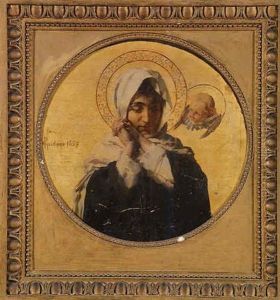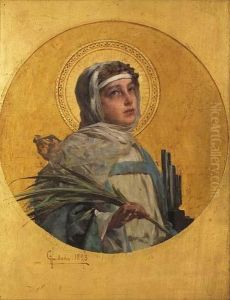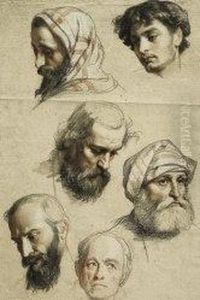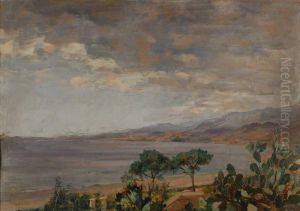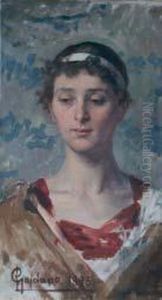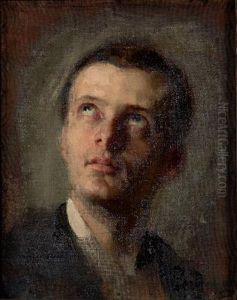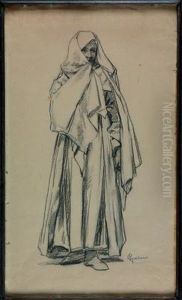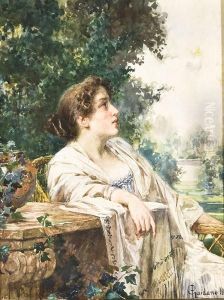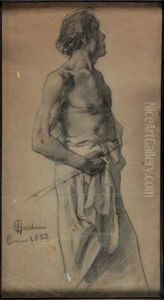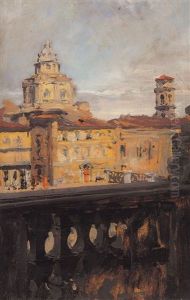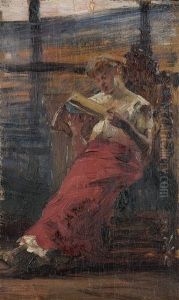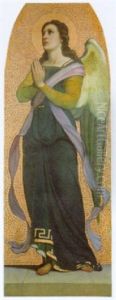Paolo Gaidano Paintings
Paolo Gaidano was an Italian painter, born in Cumiana, a small town near Turin, in 1861. His life spanned a period of significant transformation in Italian art, bridging the gap between the traditional approaches of the 19th century and the emerging modernist movements that would dominate the 20th century. Gaidano's oeuvre is characterized by its diversity, ranging from religious compositions to portraits and landscapes, all marked by a keen observation of light and a delicate treatment of color.
Educated initially at the Albertina Academy in Turin, Gaidano was deeply influenced by the Italian Renaissance, as well as by the Realist and Symbolist movements that were gaining prominence during his formative years. His style evolved over time, reflecting an ongoing engagement with the changing artistic currents of his era. Gaidano's religious works, for which he is perhaps best known, demonstrate a profound spirituality combined with a meticulous attention to human emotion and detail. These qualities made him a sought-after artist for church commissions throughout the Piedmont region.
Gaidano was not just a painter; he was also a teacher, passing on his skills and knowledge to a new generation of artists at the Albertina Academy. His commitment to education reflected his belief in the enduring value of classical artistry, even as he himself experimented with more contemporary styles and techniques.
Despite his success, Gaidano's life was not without challenges. The early 20th century was a time of political and social upheaval in Italy, and these changes inevitably impacted the artistic community. However, Gaidano maintained a focus on his art, contributing to the cultural life of Turin and beyond until his death in 1913.
Today, Paolo Gaidano is remembered as a key figure in the transition of Italian art from the 19th to the 20th century. His works can be found in churches, private collections, and museums across Italy, where they continue to be appreciated for their emotional depth and technical mastery.
